The last few weeks, well…months really, I’ve been spending an excessive amount of time wearing optical HR sensor straps. It mostly started back in January as I was preparing my Polar Vantage M and COROS APEX reviews, with the optical HR sensors having workout recording on-board, it became an easy way for me to gather additional HR data plots to compare against.
Then came my Polar OH1 Plus review, so I was doing some side by side comparisons then. And some day I’ll get around to spending a few hours to pull together all my thoughts on the Scosche Rhythm24 into a standalone review. But until then, I think this post should probably give you the clarity and detail you need to make a decision.
Anyway – the reason I like armband optical HR sensors such as the three compared here – is that they tend to be very accurate. That’s primarily because it’s an incredibly good place to measure your heart rate. Unlike your wrist, there’s usually a bit more ‘flab’ and ‘chunk’ for really good quality readings. Additionally, your upper arm tends to absorb the vibrations that your wrists don’t in certain applications, like riding. Further, for indoor hand-driven workouts (like weights), again, your wrist being strained also can produce issues with optical HR sensors like those in a watch. But upper arm? Very rarely an issue here, even when under strain in the gym.
Finally – not only that, but optical HR straps in this position aren’t susceptible to dryness issues that conventional chest straps are (such as in cooler/dryer fall or early spring weather). So, it was shootout time!
I don’t expect any further major player straps in this market anytime soon. So this list is what we’ve got to work with for the foreseeable future, certainly for this summer. As such, if you’re looking to get into this market – now’s the time. Let’s dive into it!
(Preemptive note: Anytime I say Polar OH1, you can interchangeably say Polar OH1 Plus. They’re identical once the Spring 2019 firmware update is applied to the Polar OH1. The only difference is the Polar OH1 Plus now includes two swim clips in the box, which you can also contact Polar customer service to get sent to you for a few bucks if you want.)
The Hardware and Battery:
We’ll start with the hardware. While each of the three are fairly similar, there are some minor nuances to the hardware of each. And no better place to begin than the size. So, suspect lineup below:
For the above two photos I removed the Polar strap from the pod, because of the fact that the Polar strap can’t detach, so it bunches up like a wedgie in the photo, making it look a gazillion times bigger than it actually is.
From a strap standpoint, there are some differences. While all straps are adjustable in size, only the Wahoo and Scosche straps have clips. Whereas the Polar one is permanently sewed closed in a loop.
Frankly, it doesn’t really matter, because even in the case of the Wahoo and Scosche ones you’re going to want to clip them before you put them on your arm, else, you’ll have to figure out how to clip a two-part strap one-handed. It’s doable, but it’s also likely you’ll fail and then snap the other end of the strap into your face. At which point your friends will (rightfully) make fun of you.
When it comes to charging, there are three different chargers at play here. The Scosche charger uses a clip-style design, allowing you to charge it swinging around attached to the bottom of a ceiling fan if you wanted to – it won’t go anywhere. The Polar charger is effectively a clunky AF USB stick. The charger is the USB stick, so you plug it directly into a USB port and it both syncs and charges. And finally, the Wahoo charger uses two small contact points on a not-so-strong magnetic base. It works fine, but you wouldn’t be able to stash it in a backpack to charge and assume it’d stay put on the charger (whereas the Scosche you would).
My preference here is the Scosche charger, merely because it’s nice and sturdy. However, the Polar does win points for being tiny (even if you lose it). On the downside, I find that for many of my USB chargers, the Polar doesn’t fit kindly next to other devices being charged. It’s too chubby, and ends up blocking ports.
In fact, it’s actually the battery that’s probably the single biggest differentiator between them. Here are those official specs:
Polar OH1/OH1 Plus: 12 hours
Scosche Rhythm24: 24 hours
Wahoo TICKR FIT: 30+ hours
I don’t tend to do single workouts that last to the exhaustion of any of these battery claims. That requires a lot more cookies than I could possibly eat in one sitting. Instead, I use the devices over multiple workouts – and then I tend to charge them roughly once per week. That does seem to work for me just fine.
Workout Usage and Transmission:
So, let’s quickly walk through using each one. Starting with the Polar, you’ll slide it on your arm. In doing so you’ll encounter really the only hiccup of the Polar OH1: It easily flips over (tumbles if you will). Due to its tiny size, you need to be sure that the optical HR sensor is pointed down on your arm. This is easy enough when you’ve got something short-sleeved on. But it’s trickier if it’s winter and you’ve got multiple layers on. Same goes for a wetsuit.
Once it’s on, then you’ll press the small button on the one side, and the light on the other side illuminates. At this point it’s measuring and transmitting over ANT+ & Bluetooth Smart. You can now pair it to any device you’d like on either protocol. Depending on what you’re connecting to, it’ll give you different LED colors. Same goes for battery status and so forth. If you’re doing a recorded workout (more on that in the next section), you’ll get a double-flash once you double-press the button to start it.
You can use the Polar OH1 with either Polar Flow or Polar Beat apps. Polar Flow is more about data and history, whereas Polar Beat is about real-time usage/monitoring. In that respect Polar Flow isn’t super different than the hundreds of other fitness apps out there that support Bluetooth Smart heart rate straps (yes, it’s different in other software features, but not for the purposes of this unit). No matter the app or device you’re using with it, at this point the Polar OH1 is doing its thing and you can do your workout. It doesn’t have any sport-specific modes during the workout, but you can change them afterwards if you used the offline functionality.
Next, is the Scosche Rhythm24. With this you’ll likely want to use the clasp to close it before sliding it onto your arm. After which you’ll power it on via a long-hold of the big button. It’ll illuminate the optical HR sensor arrangement on the bottom and start your heart rate transmitting on both ANT+ & Bluetooth Smart.
However, in addition to heart rate, the unit can transmit both as a running footpod and a cycling cadence sensor. It does this depending on how you’ve configured it in the smartphone app. This is unique to the Scosche Rhythm24, and not found in the Polar or Wahoo products. You can pair these transmissions with either smartphone apps or watches. For example, on a Garmin Forerunner 935, you can see the footpod pairing:
And within the app, you can see changing the modes and zones – as well as clearly see the battery level:
The Scosche Rhythm24 also has an offline recording mode that you can activate via holding the smaller button down. But more on that in the next section. In addition, the Scosche can display zone information using 5 LED colors. Because the Scosche supports the concept of multiple sport profiles/types, you can even configure a triathlon or duathlon mode. This allows you to iterate from one sport to the next by double-pressing the larger button.
Finally, the Scosche Rhythm24 is unique in recording HRV (heart rate variability) data. No other optical HR sensor on the market transmits this information in a confirmed way. You can configure this within the app:
Note that while Scosche advertises a swimming mode, and has long said they’d integrate it with Garmin devices for offline swim syncing – in practice, it doesn’t yet work. Yes, you can record a swim – but that’s no different than recording a Jazzercise class. It’s just another sport, it doesn’t record swim strokes or the like. And as of present, it doesn’t allow you to sync it to your Garmin watch. Further, because both Bluetooth Smart and ANT+ only go about 2-3cm underwater, unless the strap is directly next to the watch, you won’t get any live HR data underwater.
There’s no question in my mind that the Scosche Rhythm24 is the most full-featured of the three. That’s not really debatable. A more logical question is whether or not you’d use all those features, and if they fit what you need.
Finally, there’s the Wahoo TICKR FIT. It’s the most simplistic of the three. Like the Scosche, it’s easiest to close the clasp before sliding onto your arm. Wahoo generally recommends placing it on the lower portion of your arm (right below the elbow), though they aren’t opposed to placing it elsewhere:
Once that’s done you’ll press the singular button to power it on. It’ll now start transmitting in ANT+ & Bluetooth Smart concurrently, just like the others. So you can simply pair it to your watch, app, or bike computer and you’re off and running like any other heart rate sensor. I go into this in full detail in my Wahoo TICKR FIT review. It has no offline saving capability, nor any sort of zones or other fancy modes/transmissions. It just transmits your heart rate like a common heart rate strap. Simple, but effective. Once done, simply power it off.
To briefly recap on transmissions/protocols, here’s what each strap does:
Polar OH1/OH1 Plus: ANT+ Heart Rate, Bluetooth Smart Heart Rate
Scosche Rhythm24: ANT+ Heart Rate, Bluetooth Smart Heart Rate, ANT+ Footpod, ANT+ Cadence Sensor, Bluetooth Smart Cadence Sensor
Wahoo TICKR FIT: ANT+ Heart Rate, Bluetooth Smart Heart Rate
And last but not least, all three units support wireless firmware updates via their respective smartphone app (as well as via desktop with the USB charging clip in the case of Polar’s OH1).
Offline Functionality:
Both the Polar and Scosche units contain the ability to save workout data to their internal memory. The Wahoo TICKR FIT lacks that capability (though interestingly, Wahoo’s TICKR X chest strap does have that function).
However, while both Polar and Scosche have the function, their usability is dramatically different. In the case of Polar, they see this device as really no different than any of their other watches. So from an app sync perspective, it’s just a watch. That’s good news for you, because their mobile and desktop app platforms support it just like workouts from a watch.
To use the feature you’ll simply tap the button on the side of the Polar OH1 twice, and then the light on the other side double-blinks. Anytime it’s double-blinking, it’s recording. If it’s doing something other than double-blinking, it’s not recording. Clear-cut enough (cough, once you read the LED portion of the manual). To end the workout, you just power it off. Donezo.
Afterwards you simply open up the Polar Flow mobile app on your smartphone and it magically syncs the workout in the background to Polar Flow. Alternatively, you can plug it into your desktop computer and it’ll use the charging port to sync via USB to Polar Flow.
As seen above, you can then analyze the workout just like that from one of their $500 GPS watches. It’s all identical. Same goes for syncing that data to 3rd party platforms like Strava, or exporting it out to .TCX file from their Polar Flow website. There’s a 200 hour limit of storage on the device before you need to sync. I’ve never run out of space. The overall theme for this should be ‘it just works’.
At the other side of the ring is the Scosche system. In many ways, getting things started there is fairly similar. You simply hold the smaller of the two buttons down to enable recording mode. When a triple-set of LED’s light up orange, it’s recording. Simple enough. The easiest way to end the recording, like the Polar, is to simply shut it off.
It should be noted that you can configure triathlon mode and iterate through the different sports using the larger button, so you’ll get sport-specific broadcasted information like running/cycling cadence.
Afterwards, to download the workout you’ll open up the Scosche app on your smartphone. There’s no desktop option here. Then, you’ll manually connect to the Scosche Rhythm24 from within the app and go to the sync option. From there it’ll enumerate a list of workouts and you can select one to download. After which, you can manually select to share.
This sounds reasonable enough while writing it, but I find it’s full of caveats. First off, if you save a file to the app, it’s actually not accessible unless the Scosche device is powered on and within range. So you can’t download the files, and then open them after downloading them unless the device is handy. Second – the biggest issue – is that the internal member is limited to roughly 6 hours of recording. After that point, it’ll simply stop recording new workouts. You’ll think you’re capturing it, only to find out you’re actually not capturing it.
From a platform standpoint, the Scosche24 does however allow you to e-mail workout files directly from the app, but it doesn’t have any sort of analysis of those files. So you *have* to use a 3rd party platform/app to view the workout data.
This may sound like I’m being overly negative on the Scosche offline capability, but I think I’ve been bit too many times by it not recording a workout because I’m once again out of storage space that I’m just annoyed by it now. This is compounded by the fact that the saved workouts aren’t simply automatically transferred to your phone like Polar does (thus potentially freeing storage space). I think if Scosche solved that issue, it’d lessen the impact of the lack of storage internally.
Still, on the flip side, at least both companies do have options for internal recording of workouts – something Wahoo lacks entirely.
Heart Rate Sensor Accuracy:
I’ve done excessive testing of all three sensors over the last few years. You’ll find their data in more reviews than I could possibly count. Hundreds of data sets across all three devices. Including most data sets where I’m using two or more of these devices in comparison to chest straps and other watches. However, for the last week or so, I thought it’d be interesting to do some direct threesome testing.
No, disappointingly not that kinda threesome action – despite all the straps involved.
Instead, all three sensors on the exact same workout, along with reference data from chest straps and optical HR sensors. Unfortunately (spoiler alert), this turned out to be a relatively boring exercise. Simply put, all three sensors were near perfectly identical. Seriously.
For example, here’s a short interval run I did last week. This included 400m repeats, followed by 30-second sprints. Given the shorter duration of this workout, it’d be easy to trick these sensors into stumbling. The data set is here:
Wait, WTF? Where’s the Scosche data set? Oh, that’s right, it decided to record nothing. Actually, that’s not entirely true, it recorded a file with a flat-line for my speed. No HR. Sigh.
Anyway, as you can see – boring. The one thing you do notice however is the very slight delay on the optical HR sensors, with perhaps there being an extra 1-3 seconds on the Polar. Maybe it’s that extra 1-3 seconds that makes the Polar more accurate, at the slight expense of a delay that you frankly wouldn’t know about unless you had a secondary reference strap.
Switching to cycling, here’s an indoor ride with all three on them:
Wait – where’s the Polar OH1? !#%$&#$* me!
Welcome to my world. Apparently I didn’t press that button correctly and I have nothing. Eff me. I give up on threesomes, it’s just not working out for me.
Now, if we step back a little more broadly to my couple years worth of test data that I can look at, I’d give these rough overviews:
– The Polar OH1/OH1 Plus is the most accurate: I’d argue that it, alongside the Apple Watch Series 4, are the most accurate optical HR sensors on the market. Period. I’ve only seen one stumble in recent memory of the Polar OH1 (just a week or two ago on a ride). But otherwise, it’s really really good.
– The Scosche Rhythm24 is very good: But it can stumble slightly in some cycling situations (outdoors). For whatever reason, I feel that the Scosche Rhythm24’s optical HR sensor might be a slight step back from the original Rhythm+ sensor. I know it’s supposed to be better, but my gut feeling is something changed ever so slightly here. Don’t get me wrong, it’s still really good – but I’m not sure it’s as good. This may be how they’re getting significantly more battery life (which often can mean reducing power to the LED’s to get more battery life). Inversely, I have seen really good gym workout results here – even with arm-related movements. This is something that Valencell (the company behind Scosche’s sensor package) has spent enormous time on, and oft played up (for good reason).
– The Wahoo TICKR FIT does well, but can stumble here and there. It certainly does better than most optical HR sensors on watches, but if I were to assign an ‘A-‘ rating to the Polar unit on accuracy, and a B- to the Scosche Rhythm24 (again for accuracy only), I’d put the TICKR-Fit in the ‘B‘ range. I think there are just a tiny bit fewer cases where I see stumbles in data compared to the Scosche.
Phew, got all that? Good. If not, you can pick any watch or heart rate strap/sensor review I’ve done over the last two years and you’ll find 1-3 of these products used in every data set I’ve done. It’s a mind-boggling 648 data sets as of this writing.
(Note: All of the charts in these accuracy sections were created using the DCR Analyzer tool. It allows you to compare power meters/trainers, heart rate, cadence, speed/pace, GPS tracks and plenty more. You can use it as well for your own gadget comparisons, more details here.)
Features Comparison:
I’ve compiled all the units into a single comprehensive table allowing you to compare features side by side. Again, for the purposes of below, I just listed the OH1 Plus, but the original OH1 is identical once the ANT+ firmware update releases here shortly.
Also, if you want to compare other heart rate sensors, you can do that in the full product comparison tool here.
| Function/Feature | Wahoo TICKR FIT | Polar OH1 Plus | Scosche Rhythm 24 |
|---|---|---|---|
| Copyright DC Rainmaker - Updated July 27th, 2023 @ 10:46 am New Window | |||
| Price | $79 | $79 | $99 |
| Product Announce Date | Jan 3rd, 2018 | Mar 20th, 2019 | Jan 9th, 2018 |
| Product Availability Date | Jan 3rd, 2018 | Mar 22nd, 2019 | Late April 2018 |
| Measurement Type | Optical | Optical | Optical |
| Typical Placement | Mid/Upper Arm | Upper Arm | Mid/Upper Arm |
| Battery Life | 30 hours | 12 hours | 24 hours+ |
| Battery Type | USB rechargeable | USB Rechargeable | USB rechargeable |
| NFC Capable | No | No | Yes | HR Transmission | Wahoo TICKR FIT | Polar OH1 Plus | Scosche Rhythm 24 |
| ANT+ | Yes | Yes (with firmware update) | Yes |
| Bluetooth Smart | Yes | Yes | Yes |
| Dual concurrent ANT+/BLE | Yes | Yes | Yes |
| Analog for gym equipment | No | No | No |
| Usable HR data underwater | Depends: If on same wrist, YMMV. | DEPENDS: IF ON SAME WRIST, YMMV. | Depends: If on same wrist, YMMV. |
| Bridging ANT+ to Bluetooth Smart | No | No | No |
| Can record activity in memory | No | Yes | Yes | Additional Data | Wahoo TICKR FIT | Polar OH1 Plus | Scosche Rhythm 24 |
| Run Pace | No | No | Yes |
| Run Cadence | No | No | YEs |
| Run Economy/Metrics | No | No | No |
| Cycling Cadence | No | No | Yes |
| Cycling Power Meter Estimation | No | No | No |
| Valid HRV/RR data | No | No | At rest only |
| Configurable Sport Modes | No | No | Yes |
| Displays HR Zones | No | No | Yes |
| Requires Bluetooth Smart Phone for Configuration | No | No | Yes |
| Firmware Updateable | Yes | Yes | Yes |
| SDK For App Developers | No | App | Wahoo TICKR FIT | Polar OH1 Plus | Scosche Rhythm 24 |
| Can show workout afterwards | N/A (No recording) | Yes | No |
| Can sync files/workout to 3rd party | N/A (No recording) | Yes | Yes |
| More Info | Link | Link | Link | Purchase | Wahoo TICKR FIT | Polar OH1 Plus | Scosche Rhythm 24 |
| Amazon | Link | Link | Link |
| Backcountry.com | Link | ||
| Competitive Cyclist | Link | ||
| REI | Link | ||
Again, don’t forget you can mix and match and make your own product comparison chart – including with other heart rate sensors (chest strap or otherwise) in the product comparison tool here.
Final Thoughts:
I’m not really going to declare a one-size fits all winner here, as I think different folks have different requirements. However, within different buckets, there are some different leaders. For example – if you want to record workouts offline, it’s hard to beat the Polar OH1 (plus or non-plus). The synchronization pieces on that just work exceedingly well, no matter what device or platform you’re on. Inversely, if you want broadcasting of cadence for running/cycling, the Scosche is the best bet. Whereas if you’re looking to go for a really long time, it’s hard to beat the battery on the Wahoo at 30+ hours.
Additionally, while not covered in this particular post, the original Scosche Rhythm+ is still in many ways the bar that many devices in this category are measured against. Yes, it’s a bit older – but it has just as many features as the Wahoo TICKR FIT, and typically costs less (especially on sale). It lacks the battery though of the TICKR FIT, and of course lacks the offline recording of the newer Scosche Rhythm+ or Polar OH1. But accuracy wise? Really really good.
Finally – since some will ask, what will I – as DCR – be using? Simple: The Polar OH1/OH1 Plus. With the ANT+ firmware update, this basically solves every box I need personally. Especially with the dependability of the saved data offload compared to the Scosche. For me in what I do, I’m loving lately the ability to record the data as a backup, and instantly sync it. If they added Dropbox sync support, I’d start sending Valentine’s cards to people in Finland. And now with ANT+ on the Polar, it allows me to quickly glance at HR on the slew of ANT+ specific devices I use for testing. The TICKR-FIT is fine, but I really want the offline caching features. The only downside for me of the Polar OH1 is how easily it can get overturned, primarily in a swim related setting when used under a wetsuit, or, also in cold-weather running/cycling with long-sleeves. The reduced 12-hour battery of the OH1 compared to the 24-30 hours of battery life of the others isn’t an issue for me specifically.
With that – hope this helps – and would love to hear your experiences below!
Found This Post Useful? Support The Site!
Hopefully you found this review/post useful. At the end of the day, I’m an athlete just like you looking for the most detail possible on a new purchase – so my review is written from the standpoint of how I used the device. The reviews generally take a lot of hours to put together, so it’s a fair bit of work (and labor of love). As you probably noticed by looking below, I also take time to answer all the questions posted in the comments – and there’s quite a bit of detail in there as well.
If you're shopping for the Polar OH1 Plus, Scosche Rhythm 24 or Wahoo TICKR FIT or any other accessory items, please consider using the affiliate links below! As an Amazon Associate I earn from qualifying purchases. It doesn’t cost you anything extra, but your purchases help support this website a lot.
And of course – you can always sign-up to be a DCR Supporter! That gets you an ad-free DCR, access to the DCR Quarantine Corner video series packed with behind the scenes tidbits...and it also makes you awesome. And being awesome is what it’s all about!
Thanks for reading! And as always, feel free to post comments or questions in the comments section below, I’ll be happy to try and answer them as quickly as possible. And lastly, if you felt this review was useful – I always appreciate feedback in the comments below. Thanks!

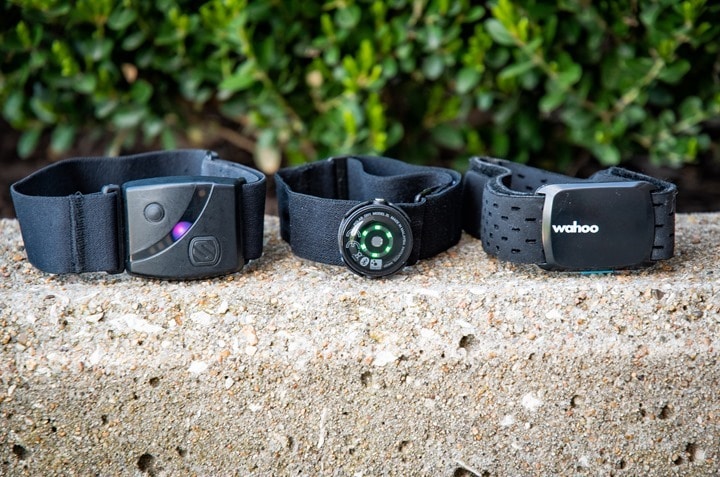
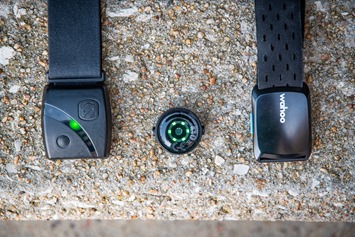
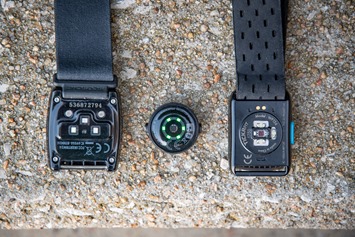

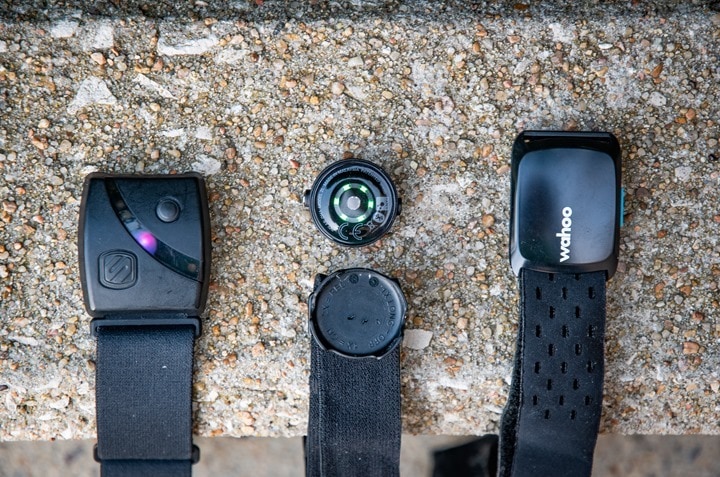


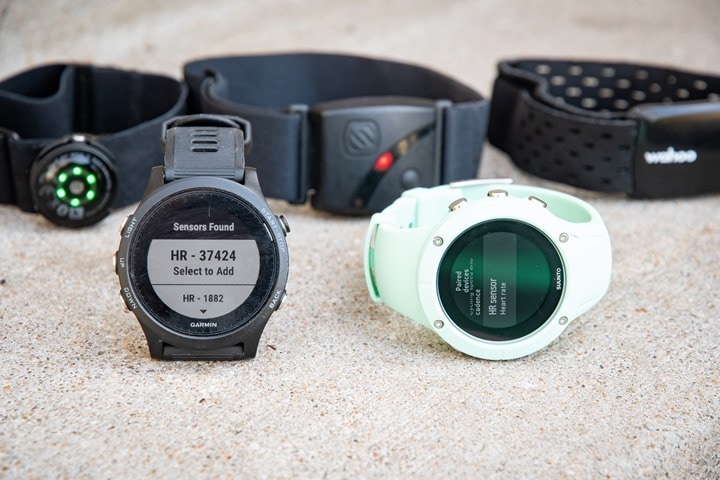
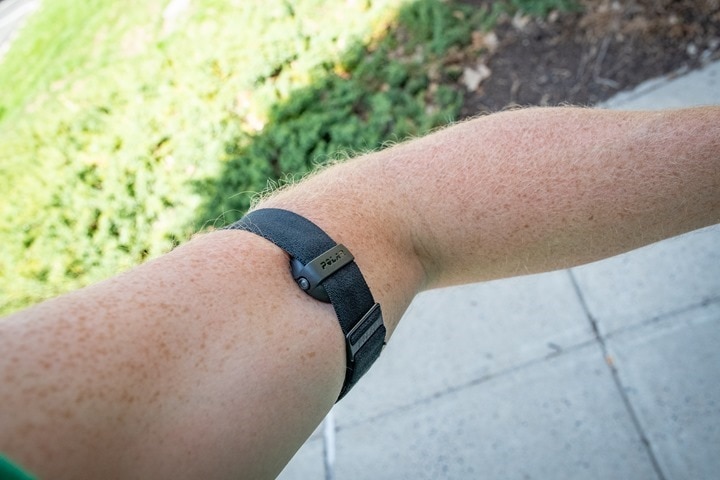
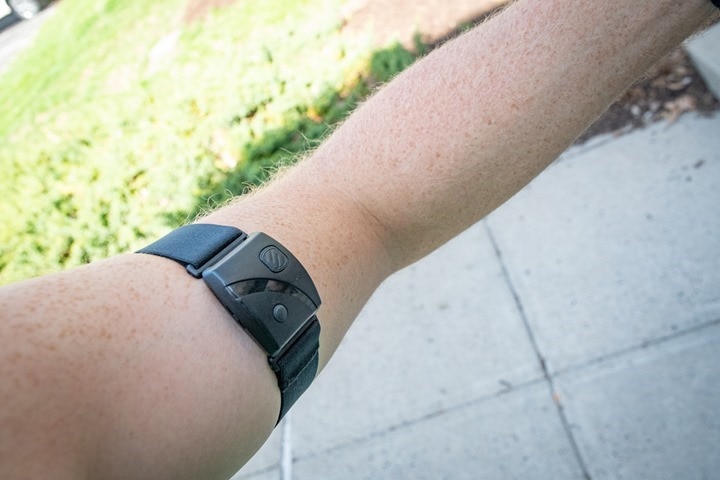

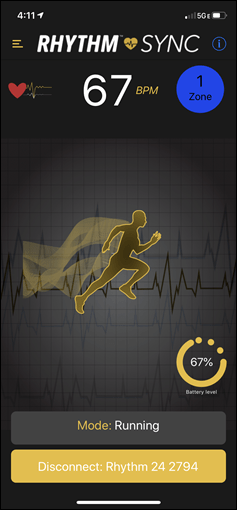

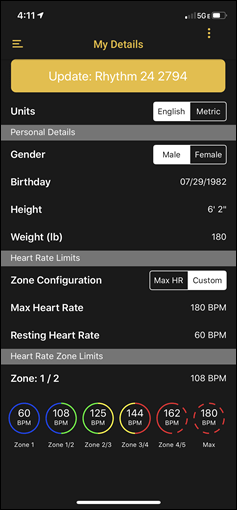
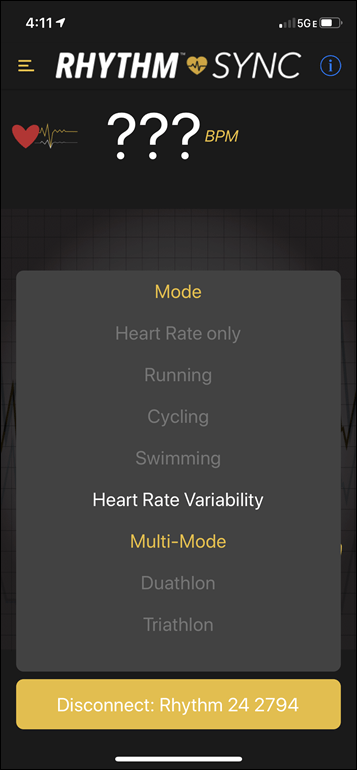
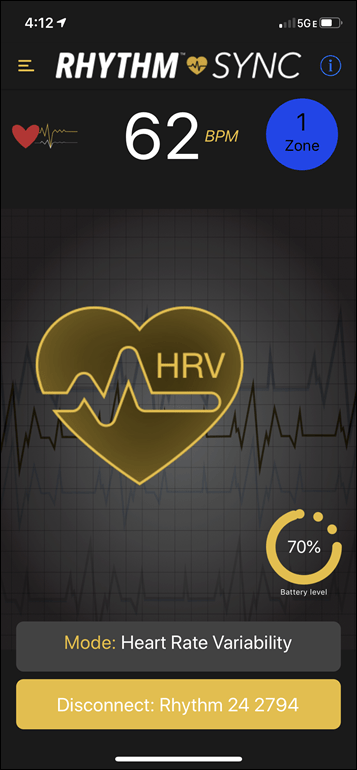
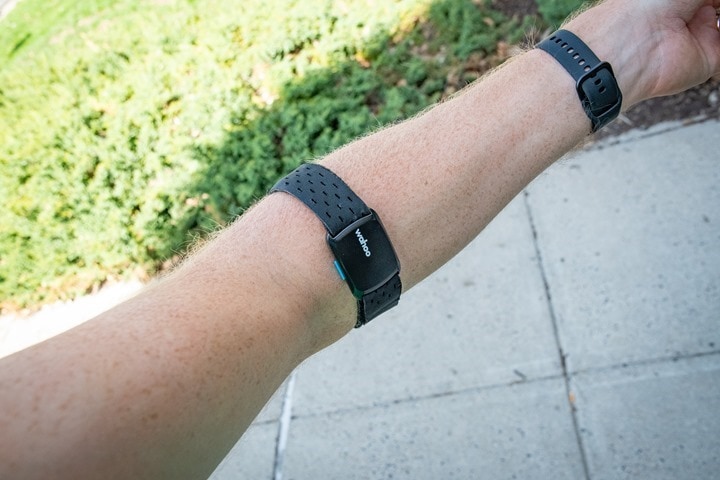
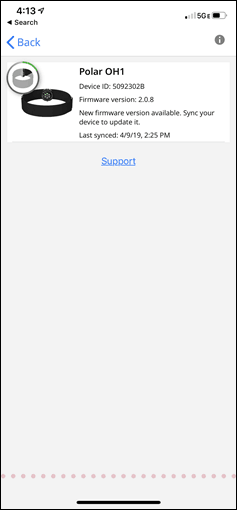
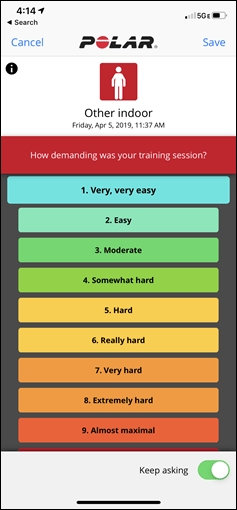
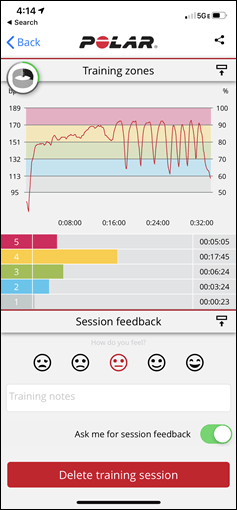
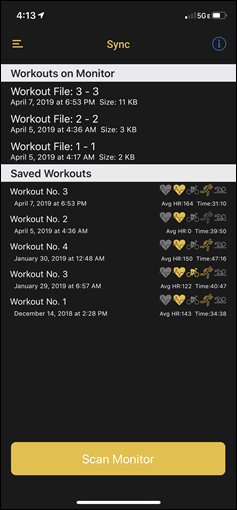
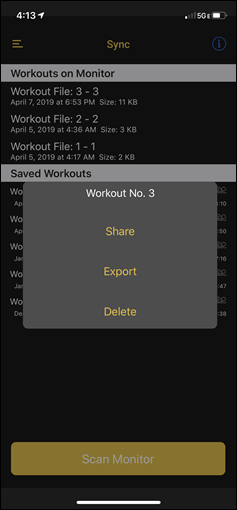
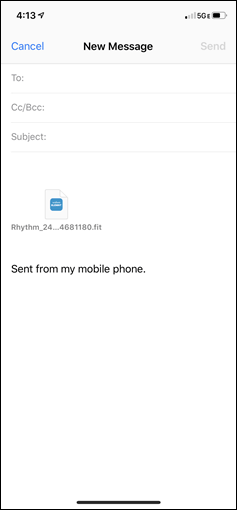
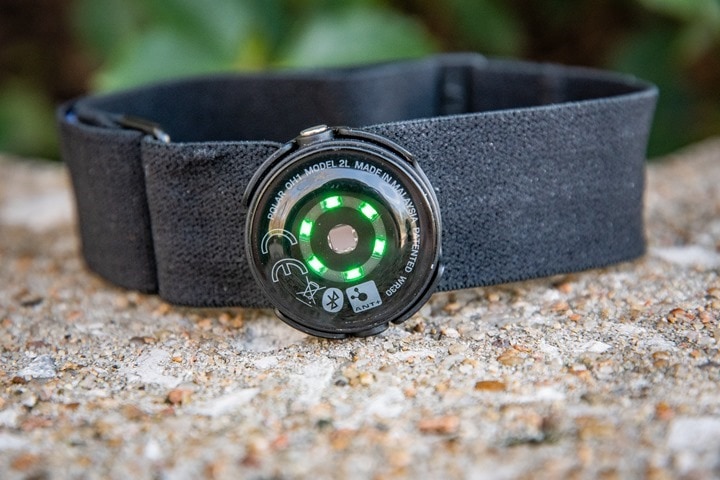


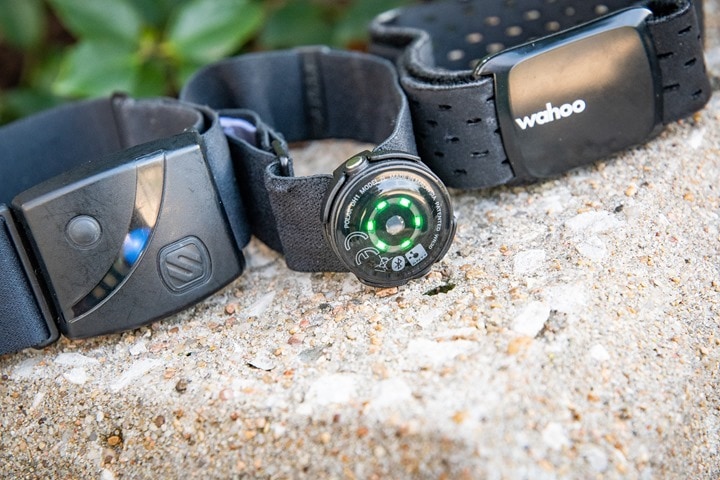

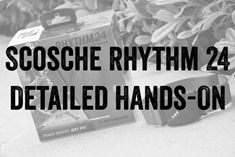

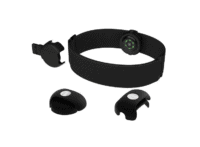
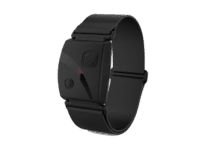
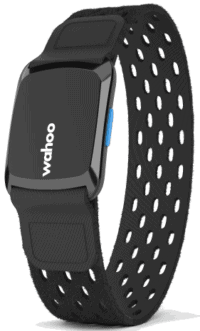



















Probable typo. Double up of Polar Flow.
“Polar Flow is more about data and history, whereas Polar Flow is about real-time usage/monitoring”
But awesome review as usual Ray
Thanks, yeah, meant to say ‘Polar Beat’ in the second portion. Thanks!
Is the polar water proof or just resistant?
As in, can i use it on a sprint tri event (even if it doesnt record the swim portion) and will not die few days after.
You can safely swim with it – link to youtube.com
DC,
I’ve noticed when running with optical hr on the forerunner 645 there is a delay between my actual hr and what the watch reads whenever I increase or decrease intensity, compared with a chest strap that measures the change rather quickly.
How does the Polar OH1 compare to a chest strap in terms of quickness of displaying changes in hr?
Thanks.
No issues with the OH1. You can see that in the accuracy section with that interval run, compared to a chest strap (HRM-DUAL in there), that it is within 1-3 seconds (at worst) on the intervals.
It seems to me like 7 second when looking at your graph. I compared my new OH1 to polar and garmin chest straps and at the moment when I start with interval, when hr increases quickly, there was up 10 beats difference and took a few seconds (7) than OH1 catched chest straps. When doing steady pace, HR was the same. Accuracy seem to be good.
I had the old Rhythm Plus (hoping the Valencel yellow-green LED array would do better on my Asian skin colour) but found that when I ran, just like as with my MIO optical HRMs, it would usually lose the HR and confuse it with my running cadence. I got the Rhythm 24 and, thinking it should be a refined version of the Valencel LED setup, was somewhat disappointed when it would, similarly to the Rhythm Plus, lose the HR fix once I started running. I gave my Rhythm Plus to a friend. Now I hear from you that on closer review you think the R24 is actually less accurate than the R+. Too bad, perhaps I gave away my R+ too soon, and I should persist in trying different arm positions or configurations to see if I can make it work reliably for running.
However, the R24 is a winner for me in one respect that maybe is a niche application, but a winner nevertheless. I use a Wahoo Kicker trainer indoors on my road bike. I record the ride on my Edge 520 which reads all the ANT+ data coming from the Wahoo Kickr, including virtual Speed/Distance Data. But there is no bike cadence data coming from the Kickr as it doesn’t generate cadence. Fortunately my bike mounted power meter (Powertap C2 on 1 bike and 4iiii Precision on the other) sends cadence data and I get this cadence data on my Edge 520.
But indoors, although I’m recording on the Edge 520, I like tracking my metrics in real time on my Wahoo Fitness App on my iPad (larger display — my vision isn’t that great). However, I can’t get the Wahoo Fitness App to track the Cadence stream from the power meters, even though they both send in BT as well as ANT+. Something about the Wahoo Fitness App requiring pairing with the Wahoo Kickr for Power, and that seems to exclude any other PM from sending data to the App. I was going to buy a single purpose BT cadence sensor to mount on the cranks until I realized that if I used the Scosche R24 on bike mode the bike cadence data stream was reliable and accurate enough to use in real time. Like I said, it’s a real niche application but it was a real frustration for me until I stumbled on this solution. The Scosche Rhythm 24 on my inner biceps tracks cycling HR absolutely solidly, no problem.
What are your thoughts on using an old Garmin fitness tracker/watch as a quick & dirty substitute? Extend the wrist band with some kind of elastic and place on upper arm and activate ANT+ HR broadcast.
Certainly plausible sure. In fact I vaguely remember someone doing roughly something like that in the last year or two and sending over a pic of it.
I had a similar problem that someone else mentioned, the Scosche would pick up my cadence and not my HR. Has this issue largely been solved? Can I finally switch from my chest strap?
Whoa. you have 5G? ‘merika is so behind the times.
I’m actually in ‘Merika right now, except, it’s fake-5G: link to theverge.com
Anyone use the Scosche 24 for Zwift running? Also how does it go in the ‘next to watch’ position on the wrist, as I find this works really well for swimming with a Mio and a 935 getting live HR. I also find mid forearm is also ‘meaty’ enough for solid HR, but does this effect cadence estimation? Cheers!
I use a Rhythm plus directly alongside my FR935 whilst swimming; works fine. As I experienced a cadance lock this winter while running with the Rhythm plus I bought the Tickr fit, which doesn’t lock to cadance in cold weather. Wouldn’t buy a Scosche device any more, mails to the customer service about the degradation/cadance lock didn’t get replies.
I have used the R24 for running on ZWIFT- it will act as both a footpod for cadence and a heart rate sensor at the same time. I had a hard time getting it properly calibrated, though, so I went back to a more traditional footpod (but still use the R24 for HR only)
I use the Scosche 24 with my FR230 (with PoolSwim) for HR data while swimming. It’s rock solid. Just make sure the watch and Scosche 24 are positioned right next to each other.
OB
How do you get the device to stick in HR-Only mode? As soon as I select ‘Run’ or ‘Bike’ activity on my FR935, the R24 automagically changes itself into ‘Run’ or ‘Bike’. It’s very frustrating because sometimes TrainerRoad won’t detect the R24 HR stream until I force it to HR-Only mode through the app, but it immediately switches back to run or bike.
When I tried to use the R24 on Zwift alongside of a footpod, Zwift decided to switch back and forth between the footpod and the R24 as the speed source until I unpaired the R24 completely.
I’ve had the same experience as Joop with e-mails to Scosche’s customer service. Multiple e-mails, multiple channels of deafening silence. Very frustrating experience.
Dan- I’ve never had a problem with ZWIFT picking up the HR signal, or the switching back and forth that you described. When I launch ZWIFT and pair a running speed source, usually the R24 shows up right away and I have to wait a few seconds before the footpod appears. When I connect the footpod, the R24 then automatically displays as the paired hear rate sensor without me having to select it. My R24 is in Run mode the whole time.
Hey Ray,
I’ve been using a fenix 5s for 18 month now, and I have to say that however I wear the watch (left hand, right hand, upside down, loose, tight, …) it never gets the data correctly when doing intervals (ie not steady runs). You mentioned something interesting in this review: power to the led to save battery… do you actually know if the data would be better if Garmin threw more light in? If so, why wouldn’t they let us configure this, because you know I can live with having to charge my watch every other day if I get valuable data unlike now…
I have the Suunto 9 (watch) and have concluded the same as you: no matter how I wear it, I can’t get data that I trust. So I use a chest strap, and am interested in this arm band thing. But no, I’ll never buy another watch again based on having optical heart rate. HR is the most useful bit of data you can get off a watch IMO, and if you can’t trust it, you’re killing the training/racing value.
I use the wrist based HR for daily monitoring, and as a loose indication of what I’m doing while training if I’m just going out for a run and it’s not an important session. If I want precision a chest strap (or maybe one of these armbands) is definitely the way to go.
Ray, thanks for doing this post. I’ve been looking for something like this for a few months now and appreciate the effort- seriously. I love your work!
I’ve been using the Rhythm 24 for indoor rowing and cycling workouts, and outdoor cycling. Very consistent performance. I bought the OH-1, and I am struggling to get a position on my forearm that keeps consistent contact. I also find the design of the OH-1 to be slightly annoying the way it flips over and gets twisted. Finally, the extra step of removing it from the holder to charge is another ease of use issue. I’m still trying to like it, but so far, it doesn’t stack up to R24.
Mark
I loved the rhythm until I decided to update the firmware and it had crazy spikes.Bought the Wahoo,takes an annoying amount of time for zwift to find it.shoulda bought the scosche 2
I got the Scosche R24 when it came out. While I liked it, they never seemed to get their Android app up the speed with the iPhone. (in fact they suggested I find a friend with an iPhone to update the R24) I wound up returning it just before the 3 month return window closed because all I was seeing was promises, not results. Have they finally gotten up to speed on the Android platform?
They have an android app now. It seems to work for me. No idea how it compares to the iphone app.
So… Polar OH1 armband or Polar H10 chest strap ??
That’s pretty personal I guess.
OH1 has one BT channel and ANT+, H10 has two BT channels and ANT+ (and 5Khz).
OH1 doesn’t do HRV, H10 does.
OH1 has a real offline measuring capabilities, the H10 has to be enabled through Polar Beat, and only stores one session.
OH1 lasts 12 hours, H10 400 hrs.
OH1 needs to be recharged using USB, H10 uses a replaceable CR2025 battery.
OH1 is fitted on your (upper) arm, H10 around your chest.
OH1 can be clipped on your swim goggles, H10 is only useable (imho) in swimming if you wear a (tri/wet)suite.
You pick.
…and optical HR works well for some people… and not for others. Personally not so good (I have untanned white skin).
Strap works well for some people… and not for others. Personally H10 is awesome i.e. 99.9% reliable, no tangible discomfort etc.
The rare time I get drop outs with the H10 is when I wet the strap when I put it on and then forget to re-wet it (saliva!) if I’ve faffed around for a while (>15-20 mins say) before starting my exercise.
However, my wife gets discomfort using the strap where the recording unit presses against her chest… probably related to how it interacts with her sports bra. I do remember Ray posting about how to solve this by taping it but I got her an OH1 instead which she is very happy with (and seems to work great for her!).
Horses for courses!
I got the 24R this January from Clevertraining UK. Unfortunately time has passed for the 60 day return but:
HR spikes whilst swimming
Footpod option will almost never go above 11km/h on the treadmill, even whilst running at 20 km/h
Ray estimated that offline sync to Garmin would be fixed last summer, they’re aiming for this summer.
I’m not at all happy with this purchase unfortunately. :(
“is that the internal member is limited to roughly 6 hours”
memory?
Been using OH1 for over a year now and very happy. One annoying thing though: After recording in-memory training and syncing it to Polar Flow it always uses default hr zones that polar guesses for you. Bit frustrating when I swim aerobic workout and it shows in Flow as anaerobic one.
What if you afterwards select the proper sport mode?
Unfortunately that doesn’t help. Neither does changing HR zones to the sport profile that in-memory workouts are synced to by default (‘Other indoor’ if I recall correctly).
I’ve contacted Polar support about this and they confirmed that this is how it currently works. Support though promised to create suggestion for their development team to improve this.
I never realised till now that it was using the default HR zones. I’ve also just discovered that the manual swim distance I enter for the activity appears on the training history page as 0m and is therefore not added to summary totals? Still think the OH1 is the perfect standalone HR device.
Hi,
Anyone using the Scosche cycling cadence ?
It sounds like a great improvement compared to the previous Rhythm+ but I am really wondering if it’s accurate – or at least fair data.
Nico
I’ve tried it out a few times and done some comparisons using the DCR Analyzer. It’s very accurate compared to a real cadence sensor except it can’t do zero. So long as you don’t stop pedaling you’re fine.
Ray,
Thanks for another great comparison!
Do you know if there is a way to afterwards combine the OH1 HR data with other sports related data (e.g. in the case of swimming like Garmin does?)
Karel
I tried the Polar, but it’s just too fiddly for me. I had it for a few winter months – it would flip under compression tops, and it was impossible to ‘feel for’ the buttons if I’d forgotten to turn it on before getting said compression tops on. I’ve gone for a the Wahoo – no flipping, big button, very simple operation. I did some initial accuracy testing against a strap, and in 99% percent of cases it was bang on (struggled with max effort long hill intervals at the top end of my hr range).
I do love the look and neatness of the polar, and with a better strap I think it could work for me.
I’ve been using the Rhythm+ for a few months and really like it. Not as much as LIFEbeam but still pretty good. Disliking straps, I have been using medical tape to place it in the little hollow on the front of my shoulder between my upper pec and deltoid. I know it was designed and calibrated for arm usage but haven’t anecdotally noticed any accuracy, data loss or other challenges in this usage. The only negative is residual adhesive buildup. Is there any reason the Rhythm+ or the OH1 should not be used in this manner?
The size, accuracy and cable-free charger make the OH1 really compelling for me. Time to hit up the Clever Training VIP account! If the USB port access challenge becomes a real issue with that charger, there are always USB-A male to female cables.
Hey DC,
quick question – with the polar oh1 have you by any chance put it on mid arm (below elbow – basically where you put the wahoo tickr in the picture)?
The reason I ask is because the upper part of my arm has tattoos, so I’m doubtful it’ll be accurate – however below the elbow there is space for me to put one of these sensors, however you’ve marked the Polar for upper arm in ‘typical placement’ category, and for the other two, you’ve marked them as mid/upper arm.
Also, while I’m at it, I’ve noticed you’ve written “Unlike your wrist, there’s usually a bit more ‘flab’ and ‘chunk’ for really good quality readings.”
Does this mean that technically, we could put the opticals in any place of the body, provided there was more flab/chunk in that area? I was thinking of putting it on my forearm where the fatty part is OR somewhere along the calves area?
Thanks in advance
You can use OH1 in both upper arm or forearm (stated in manual). I’ve used both positions and haven’t noticed difference. Tried couple of time in wrist also. That worked also but not as well as supported positions.
I exclusively use Garmin and connect at the moment but I would be interested in the polar oh1 to monitor activities when I can’t wear my watch and can use the offline storage.
Is there a way to easily import the cached data to Garmin connect?
Had anyone looked at the HRV data from the R24? I know that it’s hard to evaluate but the Tickr straps sent garbage HRV data over Ant+ but were fine in BTLE. As a hoarder of data I’ll probably never actually use HRV is one of the only reason I’d even consider a strap these days.
I use my r24 every morning for hrv, mainly after the hrv4training developer (researcher) raved about how good it is in one of his blog posts.
Ray… I have a Scoche Rhythm 24 and have been wearing that during runs with my Apple Watch Series 4. On the surface it seems the Rhythm updates the heart rate more frequently than the optical HR on the watch so the HR graph seems more detailed. Based on your experience am I creating a needless hassle since it seems you believe the built in optical HR in the Apple Watch series 4 might be better? Thanks…
Hey DCR,
Does the Polar OH1+ work on really dark tattooed skin?
I have the Wahoo. It just works. Every time. The initial strap is garbage and lasted like a month but the replacement generic strap I bought off amazon is flawless, and has lasted almost a year now. I almost bought the Scosche also but after about the 400th comment about the case breaking and other small issues I gave up and became really satisfied with my Wahoo. I have an open case with Wahoo that is seemingly receiving zero action on data drops with the Element but I really appreciate my Tickr fit.
i did get a notification of a post recently left on the Scosche in depth review comment section where the write stated: why can’t the watches just come with a stretchy band so you can just push your watch up onto your arm for workouts. Brilliant!!!! if not a stretchy band why not a easily changeable one? simply click off the wrist strap click on the arm strap and use it high. Now THAT is a million dollar idea!
typo— *writer stated…not write
You just blew my mind with that idea!
DIY with 1″ elastic stitched in place. Perfect fit, every time, and took 10 mins.
Any chance of linking to a good replacement strap for Tickr? I have only used mine a few months and it sure wears badly. I prefer the OH1 strap.
This got me thinking Ray.
If you are out on a run (and not testing something!!), do you rely on your watch’s HRM sensor? Or do you always rely on one of these straps for HR data?
I have the Rhythm24 solely for getting HR data while swimming. But if my Fenix 5X is not getting the best HR data for running, I might start using the Rhythm24 for that as well.
I generally rely on the optical HR sensor in a watch. While I’m also usually running with a chest strap, it’s almost exclusively for gathering reference data.
On the flip side, I generally don’t run with larger watches (like the 5X), partially because I find them too big for my preference, and also because I know accuracy goes downhill the bigger the watch.
“and also because I know accuracy goes downhill the bigger the watch.”
Huh? You’re kidding, right? If you’re serious, please explain.
100% serious.
So the bigger the watch, the more it bounces. Especially true the heavier it is. These bounces may not seem like much, but they significantly impact accuracy. It’s one reason the larger Suunto watches (along with the F5X) tend to struggle a bit more than their smaller siblings with the exact same sensors.
It’s also why Suunto held out so long on optical in their larger units (going for smaller ones first, before the market forced their hand).
OK, I get it. Bouncing lets in light and maybe also changes the shape of the capillary pulse blush wave. Is there an accelerometer desensitization effect too?
This is perplexing news. I guess I will need to start using the R+ to compare.
I used to run with the Garmin 235 and on long runs it would give me alarming HR results. I tried the same run with the R+ and got different results.
I second the added value of the oh1. I have an old polar M400. I considered going for a new vantage M, but with the oh1 I don’t need anything new for now. I love all the possibilities of polar flow and now coming up the ant connections, I even don’t have to use the really ancient garmin chest strap anymore when I occasionally cycle and want to pair up with an even older Oregon 400 for navigation on my steer.
Very timely. My original Scosche Rhythm+ is down to ~2 hours of battery life anymore and started doing a bit of signal dropping the last month or two..
I’ve been very happily using the R24 for a few months now. After reading this comparison, I do feel very satisfied still with the decision to go with this one over the others. Obviously this is not a detailed review of any one device but a few things on the R24 that I’m not sure come through in the reviews I’ve seen:
1. The R24 will match your workout type automatically in most cases. I use an Edge 520 (Original one) for cycling and it will automatically set the R24 to cycling mode when I start the ride. I have a Fenix 3 for triathlon and it will set the R24 to running, cycling…whatever when I start the workout. There isn’t any need to worry about triathlon mode on the R24 itself since during multisport event, it will change the type automatically. You can watch it happen on the app, it’s quite nice.
2. Swimming is disappointing, though not majorly. I would mostly use it for post-workout analysis which is still valuable but obviously not quite as useful as it is on the bike or run. It WILL work as expected with an open water swim. Just not a pool swim. Obviously very frustrating since I have to imagine the functionality is similar/the same for those two activity types. I did a race this past weekend and have the HR right there on the swim leg.
3. For me the 24 hour battery life is awesome. I rarely do events that would push that (though I have done 3 in my life where 12 hours would have not quite been enough) but given how much I travel for work, I like knowing that if I charge it before I leave for a trip, that’s just one less charger I need to bring with me since it’s got it’s own cable.
I don’t really use most of the special features like cadence for running (my watch supplies that) or cycling (my cadence sensor can detect when I’m not pedaling) and I honestly have no use for recording anything to the device anyway so I really don’t care about that one. For me, I think this one is just about perfect!
Funny, because that’s the one thing I dislike about my R24. If I put it in HR only mode, I want it to stay in HR only mode when I pair it to my Edge 1000. I’ll let it know when I want cycling mode. Because it’s annoying to have to tell my Edge “yes, use the real cadence sensor instead of the R24” each and every time, I rarely use it for cycling.
Well, I’m glad I read this comment #49 — I had no idea the Edge 520 automatically told the Scosche Rhythm 24 to switch into Cycling mode. This will save me some flailing around in frustration just before the ride, as my iPhone app sometimes takes a while to connect.
Also see comment #50, I didn’t realize the Edge tries to capture cadence sensing from the Scosche Rhythm 24 when it handshakes with the R24 to switch it to cycling mode. I agree it is an annoyance, but fortunately, it still is accurate enough that I won’t necessarily take the trouble to make sure it stays on the “real” i.e. power meter cadence sensor.
@Paul Different strokes for different folks I guess. The last thing I want to do before every single workout is pull out my phone to set up my HRM. Assuming I have my phone with me. Which I rarely do. I don’t even have the cadence sensor paired to my 520 so it’s not going to pick it up automatically. If I did have it paid and wanted to use a difference sensor, I find it easier just to turn the one I don’t want off in my Edge. No phone required!
@Su-Chong See above…but the Edge won’t capture from the cadence sensor unless you pair it. If you ever want to use a specific sensor…just turn the one you don’t want to use off on the Edge.
RE: Switching into the correct mode
Holy crap, I never knew that either (insert sarcastic comment about not having a findable proper detailed user manual for the R24 here). Still, that’s super cool. When I get off this plane I’m gonna dig that outta my bag and give that a whirl. Super cool.
How necessary is it to have the app if you just want to use it as a replacement for a normal HR chest strap? I understand that you don’t have access to some of the secondary features, like recorded workouts and so on, but if you just take it out of the box, hit power, and pair with your watch, can you successfully run it without ever using an app beyond Strava/Garmin Connect?
Don’t need to use it at all.
I know the Scosche doesn’t ‘need’ to ever configure/use the app. I don’t know off-hand if you can take the Polar strap out of the box and never use the app or not (I think so, but not 100% certain). However, certainly after configuring it once you definitely don’t need to use the app. I often do that on both.
As a stand alone device you can’t ever use the OH1 with the app. Doesn’t matter if you have configured it, it only downloads data to the app. I checked this with polar after someone gave me an OH1 in the mistaken belief that it would be useful. It wasn’t.
You can pair it to a phone but you still need an app. I never take a phone with me.
You can pair it to a watch and see your data that way but I tried that with a polar unite that I bought just for that job and the experience was so frustrating that I threw both in the bin last week. I still have the chargers for both if anyone wants them. They’re no good to me.
If you’re happy to hand over all your rights to all your data then just use the flow app. Otherwise don’t get an OH1.
Sorry.
Meant to say you can’t ever use the OH1 without the app!
But that’s not true. None of it is true.
You can use the Polar OH1 just fine once it’s activated as a general HR monitor. And you don’t even need to use the smartphone app to do that, just the computer will work fine. And then there’s no recording of the data as long as you don’t double-tap to start recording.
You need to use the Polar Beat app if you wish to change the radio connection settings. Otherwise as Ray said it works like a normal standalone HR monitor with optional internal recording that you can sync to Polar Flow afterwards.
No that’s not true.
I have it emailed direct from Polar themselves.
If you try to use it as a general HR monitor what are you connecting it to to get the data? I never take a phone with me on a run. And polar said that stored data could not be downloaded to a phone after a workout without using the flow app. So no phone.
That leaves either a computer to get the data or a watch to bluetooth the data to.
Polar specifically said to me that it could only connect to the flow app to download or view data:
“In order to use OH1 in standalone mode, user has to register it to Flow account first. Otherwise, OH1 can only be used with sport watch or fitness app on phone.” That was form Gary at Polar.
So they said you need to use the app. I’m not using the app because I’m not giving polar either my data or any rights to my data.
So no, the computer will not work just fine. Unless polar lied to me?
That leaves a watch. granted there may be other watches out there that it works ok with but I tried it with a polar unite and the experience was way to frustrating to bother with.
So maybe you can use it with other products that actually work ok but I would never recommend using it with a polar watch.
And I’m not going to continue buying watches just to see if this works.
If you don’t mind polar’s intrusive privacy policy then you can probably make this work for you.
If you do mind it, there’s not much you can do to make it work.
Yeah, I’m really not sure what to say here. And in the 738,000 comments left on this site in all the years, this is frankly the most perplexing one I’ve read. Seriously.
In summary:
1) You bought a heart rate sensor that broadcasts HR to other devices but refuse to use/buy other devices…and thus are upset because of this conundrum.
2) You bought same said drive that also handily records data to itself, skirting your first issue, but are equally upset it does this very function so well that it makes the data easily accessible.
Finally, I’m not entirely clear how the Polar Ignite got dragged into this scene, as it already has a HR sensor in it. But assuming you didn’t like that sensor for some reason, pairing the OH1 to the Ignite is a 5 second process, and remains paired forever (seriously, Polar actually re-pushes the pairing back to the watch constantly). But I suspect that’s all besides the point here.
Wow
I’m not really sure why I even replied, since you’re just making up stuff about this anyway. you say this is one of the most perplexing you’ve read. Sounds like you didn’t even read what I last wrote so that may be why.
Lets try one more time shall we…
1) I didn’t buy this device. It was bought for me on the advice that it could work as a stand alone product, knowing that I do not train with a phone, and did not own a bluetooth watch. It had to work in stand alone mode.
I bought a device specially to access that data. I did not refuse to buy that device, I actually paid $173 Australian dollars for it. I had not other use for it. Therefore your first point is simply wrong but if you’d even read what I wrote earlier you’d know that already.
2) Where on earth did you make this up from? I’m sure it records the data fine, but you have to hand over both your data and the rights to your data to access it through the polar flow app.That makes the data not very accessible at all.
So I’m not “upset that it does this function very well” but hey lie all you like, you’re the moderator here.
I’m disappointed that this information is not accessible without handing over my data and the rights to it. Again if you read my post you’d know that.
3) I never even mentioned the polar ignite but if you’re going to make stuff up then why would that bother you.
I bought a polar unite to access the data. The pairing process, though cumbersome was never the problem. For the record mine never paired until the about the fourth attempt but that wasn’t the problem.
The problem is with simply using the polar unite. It’s glitchy and unresponsive and unreliable to the point where its just not worth owning.
All this would have worked ok if I didn’t have to use the flow app. But since that’s the only way to get the stored data off the OH1 (which you still haven’t acknowledged by the way) then it isn’t that useful.
I’m sure you’ll put more words in my mouth after this but I’ll give you another try anyway. Just for the benefit of redrover above, who asked you a question, no, you can’t access the stored data on the OH1 without using the flow app. Polar have told me this repeatedly. Do you agree?
“no, you can’t access the stored data on the OH1 without using the flow app. Polar have told me this repeatedly. Do you agree?”
No, you do not need to their phone app.
You can use their desktop app just fine, to get the data. It’s available here:
link to support.polar.com
“but you have to hand over both your data and the rights to your data to access it through the polar flow app.”
I’m not sure why you’re saying you have to hand over your ‘rights’ to the data. It’s the exact same desktop app and platform that you would have used for the Polar Ignite/Unite watches. They don’t sell your data, and it’s fairly well documented, and by extension also protected by GDPR.
But again – you can use any 3rd party app or device you want to connect to the OH1 and record there after the initial registration, with ZERO data has to go to Polar if you want to record it on another device.
It’s no different than literally any other device in this market.
I think what he wants Ray is an internally recording HR device that saves the data as fit/tcx files to be accessed from a computer via USB? But I could also be completely wrong because I don’t think he understands the technology?
Hey there we go.
Thanks. This is more like the conversation I’d hoped to have.
Quick recommendation if I may be so bold…can you please read a bit slower, and then respond. Here’s why: you quoted me (thanks) about using their flow app and then said the following:
“No, you do not need to their phone app”
I said the flow app, not the phone app. Why do you assume I meant a phone app when I didn’t say that at all? The flow app works on a laptop. I mean, check out the link you just sent me and it literally sends you to the flow app. The laptop app that I referred to. Don’t take my word for it, just scroll up and check for yourself.
Then you said:
” It’s the exact same desktop app and platform that you would have used for the Polar Ignite/Unite watches”
How do you know that?
I never used any polar app for my unite watch. Never even considered it. As I said, I only bought the watch so I could avoid using the apps when I looked at data from my OH1. There was no other reason for me purchasing the unite. I know, waste of money right! Well I know that now.
Where you say:
“I’m not sure why you’re saying you have to hand over your ‘rights’ to the data. It’s the exact same desktop app and platform that you would have used for the Polar Ignite/Unite watches”
I seem to have missed something here. How does that, in any way, address my privacy concerns. You assume (incorrectly) that I’ve used the app before so that’s fine? That’s not an argument. It’s just a dismissal.
I didn’t say I was worried about them selling my data. But once you agree to the following there is still much that can be done without selling it, and that’s not ok with me. Here’s why I’m saying that I’d have to hand over my rights to my data.
Here’s two of their terms:
“I agree that my personal data may be transferred and processed outside my country of origin as described in the Polar Privacy Notice. I can change my settings about this consent at any time.”
“I agree that Polar may collect and process my sensitive personal data such as heart rate and other health data considered as sensitive data as described in the Polar Privacy Notice. I can change my settings about this consent at any time.”
Now you may be the sort of person who happily ticks all the boxes without even reading them but that’s not for me.
I don’t agree to them in the first place so there’s no need to change my settings at any time.
Perhaps you’ve seen pages like this or perhaps you just don’t care. I’d be interested to know? Check out the following:
link to wareable.com
link to theverge.com
link to theverge.com
No data sold there. What’s the problem?
I’m just not giving my data to them. Period.
So you’re telling me that I can keep control of my data by using a third party app to view it instead of the flow app? Two things here:
1) I’m still looking for one that lets me keep my data offline. Haven’t found one yet. Happy to look at any suggestions.
2) Why didn’t polar say so? I outlined my concern to them in detail and they’ve had many opportunities to let me know that and yet they never did. I have three emails that each explain that the OH1 can only be used in data storage mode with the flow app. I asked about third party apps specifically.
I even asked you on your OH1 review for exactly that information. Now you’re not Polar support so it’s not your job to set me straight there, but after getting no reply there for weeks now you’re telling me that there’s a way around polar’s data collection?
Could have done with that information before.
“It’s no different than literally any other device in this market.”
Which is why I haven’t purchased any other device in this market.
I think that’s exactly what I wanted Andrew. Thanks for simplifying it.
I don’t care for any of the analysis done in any of the apps. I just wanted to see my data and not share it.
It can’t be that hard to do because the technology fitted in a watch.
It would have been fine if the polar unite I got for the purpose worked ok. It did successfully record and let me see my data maybe six or seven times but it was so glitchy, unreliable and cumbersome trying to get it to work I threw it and the OH1 in the bin. Very satisfying.
I thought I’d add a photo so potential buyers of the OH1 and the Unite can see how easy they are to upgrade. No reliability issues now!
Perhaps you’re right Andrew, maybe I don’t understand the technology, but if the technology requires you to have a social media account for your heart rate then I’ll never use it.
Actually, I’ll just never use it. I can train just fine without these waste of time devices.
Should have sent it back for a refund straight away.
This review comes just in time as I am looking to buy an armband HR monitor. I had been using a Garmin chest strap which I very much dislike- also because chest straps are not comfortable and can slide- a total pain!
Great write up Ray, nice work! To add a couple nice features – The Rhythm 24 has a battery level indicator when you push the large button once 3 green LED’s light up on the cover to show battery level – 1,2,3. Also, the Center LED is a nice zone indicator which you can customize in the rhythm sync app. The lights go from Blue, Green, Yellow, Red, and Rapidly Flashing Red coinciding with HR Zone 1,2,3,4,5. This is nice whether you are “online” or “offline” for a quick glance to see where you are. Keep up the great work Ray!
Ray,
I am absolutely amazed by the accuracy of the OHR you obtain.
I’m a caucasian, standard skin texture, I think I wear the sensor correctly, I tried shaving, etc. However, apart from the resting HR, I seem to obtain completely unusable HR data from my Fenix 3HR and Fenix 5 Plus. The data I get bears only very little with the actual HR.
Am I the only one?
Ray,
I am absolutely amazed by the accuracy of the OHR you obtain.
I’m a caucasian, standard skin texture, I think I wear the sensor correctly, I tried shaving, etc. However, apart from the resting HR, I seem to obtain completely unusable HR data from my Fenix 3HR and Fenix 5 Plus. The data I get bears only very little correlation with the actual HR.
Am I the only one?
I think one thing to keep in mind is that wrist-based optical is substantially different than other-arm-part based optical. The key difference is really how much the bit of extra flab makes in accuracy. On a wrist, especially a lean athletic person, it’s actually fairly difficult to get good readings. An odd scenario where the more fit you are, the worst your readings will be.
Some people in that scenario will flip their watch around so that the sensor is on the inside of the wrist, this helps quite a bit.
Can anyone get the R24 to pair with the Polar Beat app? I never have a problem with the rhythm+, but the R24 simply refuses.
I originally had the Scosche Rhythm+, and now have the Rhythm 24. Unfortunately, both have had the same issue, which is that the plastic housing holding the strap mounting pin breaks. (The R+ had a fixed plastic bar, not a true “pin,” while the R24 has a true watch-style pin… but in both cases, the plastic corners right by those systems broke.) I suppose it’s possible that I’m wearing them too tightly, so I wouldn’t criticize… but I’ve found Scosche’s customer service to be somewhat less responsive than I’d like. They tend to not return emails in a timely fashion, things ship slowly, etc. They’re friendly, respectful and seem willing to help, but everything takes more effort and time than you might wish. Note that this is based not only on the issue I mention above, but another interaction due to the fact that when I bought the R24, the charger it came with was defective.
Other people in the r24 article comments section had the same issue as you and were issued replacements.
Ray – thanks for the great post!
You mentioned gym workouts briefly, but I’m hoping you can expand. I have a Fenix 5 and find that HR during workouts is spotty at best, especially depending upon the exercise itself. I’ve used the old Scosche for running in the past and liked it quite a bit, but also found it not great for the gym. Any further guidance on which might be best for the gym?
Thanks again
I’d consider trying different spots on your arms/body. Both things like inside vs outside (Meaning whether the sensor pod is facing inside or facing outside), as well as even trying upper arm vs lower arm.
I personally use mine pretty much like shown in the pictures above. Typically, I wear it about an inch higher than the pics show, but I couldn’t quite get the camera angle right any higher. I usually almost always have the pod facing inside.
I’m now on my second Scosche R24. The housing on the first one cracked and is no longer waterproof, but still perfectly functional when dry but that makes it essentially useless for strenuous activity. The second hasn’t been functioning for over a week, with only a single green led lit. When they’re working they’re fantastic, but getting any kind of response from Scosche support is like getting blood from a stone. My second version is still under warranty and I’m looking at having to send it back.
All that aside, great review DCR!
Great comparison Ray!
I wanted to ask about how you used Rhythm 24: which modes did you use while doing the tests? Did you switch to running mode while running and cycling mode while cycling? Or did you stay with “heart rate only” mode?
I generally tried to ensure I was aligned to the correct sport I was doing. Not saying that happened 100% of the time, but a solid 90%.
(Though, according to one poster above, the Scosche will actually be smart enough to follow the Garmin device sport mode automatically, in which case since I almost exclusively used Garmin devices to record the data, all sports should line up.)
Hi Ray,
Why doesn’t Garmin have an armband with just optical HR? Do you expect they will come up with one?
Thanks!
It’s a super logical question. I’d imagine at some point they’ll see the light.
I do read plenty of comments on this site regarding Garmin watches not playing nice with 3rd party optical monitors. i.e. Garmin running metrics are inaccurate or not recorded to the fit file. If a Garmin product has the same problems then they can’t blame the 3rd party like they currently do?
I actually think the vast majority of the issues here are frankly on the part of the accessory. The ANT+ spec for HR and HRV data is dead simple. After all, plenty of HR chest straps do it right.
However, the secondary part to remember is that *nobody* is doing HRV correctly on optical during sport today yet. As such, it stands to reason that the metrics built atop that would fall apart.
My problem is connecting my Scosche Rhythm 24 with my iPhone App. I can turn things on and off to try again for ever and still not get a connection.
The main disconnect is between the Armband and the iPhone Bluetooth connection. Often it just doesn’t connect. Or even after connection, I try searching the Scosche Rhythm Sync App in vain — i.e. it doesn’t detect the Armband and gives the “No monitors available” message; so I go back to my iPhone settings and find that in the meantime the Bluetooth setting listing has lost the connection with the Rhythm 24 again. It doesn’t seem to matter if I put the phone directly onto the surface of the R24 module it still doesn’t make things work. It seemed to work better before, as I remember, but it just is getting worse and worse.
That’s why I was so relieved to find out that the Edge 520 tells the Scosche R24 to switch to Cycling Mode, and presumably the Forerunner 920XT will likewise switch it to Running Mode so I don’t ever have to use the Rhythm Sync App at all, ever.
The main thing I notice with my Tickr Fit is that the HR generally reads low, maybe because it lags due to averaging?, which I see when I compare with the HR I get from a medical grade ECG device, in this case Qardio
Hi Ray
if i get a polar OH1 plus and swim with it, is there any way of syncing the HR data from the swim with the garmin data from the Vivoactive on my wrist?
thanks
Hi,
do you think sensors of this kind are suitable to test max HR?
IMHO optical sensors on the wrist are not reliable at that extreme intensity and calculations like 220-age aren’t either, but it’s an important information for any heart rate based training.
Whether the Optical HRMs are good on the wrist for MaxHR is neither here nor there (better on the medial biceps, but different for different people, and depends on the activity — running is a challenge for OHRMs because of the arm swing artefact interference), but the 220-age estimate is ridiculous, more like a starting point to see if your measured reading is realistic or way off realistic. It’s a little like predicting nect week’s Wednesday weather on the mean of the temperature graphs for that date for the past 100 years.
I’m 71, and 220-71 would be 149 but I easily get there and over. I have clocked 182 running (very rarely, in extremis), so I use that as my max HR in calculations.
As far as accuracy goes, for the vast majority of MaxHR tests, it’s a slow-burn effort (over a number of minutes).
Generally speaking, optical does this fairly well (as compared to instant on/off intervals, which depending on the person, is where things go wrong). So for something like a ramp test or traditional VO2Max test, you typically won’t have issues with optical, unless the optical HR sensor is basically failing across the board.
Said another way – if optical HR is gonna fail, finding max HR in a standardized test isn’t likely to be the place it’ll fail. If anything, it’ll be the place it does well.
I think you answered my question but here it goes. I have a Scosche RYTHM+ I purchased 2-years ago. Is it worth considering an upgrade in device? Right now, the battery life seems sufficient although I am not sure exactly how long it really is good for.
@Tim: doesn’t this depend on what you’re using the R+ for and what you would like to use it for? My Rhythm plus was working great when standing around or even when biking. But when I ran, the motion artefact overwhelms the HR reading. I upgraded to the R24 hoping the running would be better, but it wasn’t. Apparently being Asian, my skin tones challenge the optical capabilities of even the Scosche series of LEDs. I gave my R+ away to my buddy; he thinks it’s great and he uses it for running no problem, better than his electrical chest strap.
but I eventually found a niche for my R24 — indoor cycling. My power meter cadence bluetooth signal to my Wahoo Kickr doesn’t get through to the app on my iPad that I use for a large display while cycling on the trainer. But the Scosche R24 Bluetooth signal pairs nicely on the app and it delivers the HR data and also the cadence data, so problem solved. Otherwise, I don’t use the recording function on the Rhythm 24, nice though it seems to be, and I normally don’t really need the cycling cadence function, i.e. on the road, because my power meters send cadence data by ANT+ signals nicely to my Garmin Edge520 head unit.
So it’s really dependant on what your individual needs are. Maybe the Rhythm Plus works fine for what you need.
@Su-Chong so you are using the R24 for cadence and HR on Zwift? Like you, I seem to have little issue connecting sensors to my Garmin Edge 1000 via Ant+. I find my MacBook BLE to be tempermental when my R+ now connects to it (Zwift) and then I try to let the Ant+ side connect to anything else (Fenix5 for example).
Thanks for the input and comparison. I am which of the R+ models (how old) Ray refers to when he talks about how good the sensor data is. I also have a TICKR as a back-up but really like the armband option.
I am also REALLY curious about how well the R24 can record HRV.
Thanks for the input.
Not on Zwift. Using Wahoo Kickr (1st generation hardware), but monitoring in real time using Wahoo Fitness App on my iPad to give me a nice large real time display while Im actually recording the session on my Edge 520 bike head unit. The iPad seems to connect to my Scosche Rhythm 24 Bluetooth no problem, so linking to the Wahoo Fitness App sensor pairing etc goes smoothly.
In contrast, for some reason my R 24 no longer pairs with my Scosche Rhythm Sync App on my iPhone, so I can’t look at the R24 through the App. I’ve sent a help request to Scosche but no reply yet. Maybe I should try loading the App on my iPad — but iI never carry the iPad around, I just leave it inthe basement next to my bike and Wahoo Kickr trainer.
I’m a little sceptical of the precision of the time locating of the individual pulse waves of the Scosche, so likewise of the derived HRV data. But I’m a little on the fence about HRV anyway.
link to hrv4training.com
I have 3 questions,
Do you always have to choose between storage and live data? Can I use them in a triathlon and store the swim data but have live data for the bike and run?
Will the stored data pair with a garmin workout in the same way the HRM swim will?
How does optical compare with chest straps in terms of accuracy?
You always get live data – always. Storage is simply in addition to that.
As for the HRM-SWIM, no, it won’t be the same. The Garmin watches can download data directly from the HRM-SWIM afterwards, but the Polar sensor doesn’t support that option for Garmin watches.
As for accuracy, there’s an entire section up above where I outline that.
Can you turn off the broadcasting on the OH1 when in cached mode to save battery? I was thinking of using it for a 12+ hour event which will push the limits of battery life, but I do not need to broadcast HR, just store it. Is there a way to turn off the broadcasting completely to add battery life?
Thanks.
Is there a way to tie it into the workout after or or will it live solely in the native app?
No method to turn that off. Generally speaking, the ANT+/BLE broadcasting piece is actually a super-low hit on battery (usually just a couple percent). For a device like the OH1, it’s that array of LED’s that’s the beast of battery.
RE: Tie it back into a workout. No, it’s the one big gap of the whole OH1/Vantage/etc story for Polar. Totally seperate.
Hi Ray, thanks for the nice review.
I have the Scosche Rhythm 24 (before the Rhythm+) and works very good for me. The only problem is their Android application.
Any info when will they update it and finally work as it should?
I don’t know there, at least in terms of something I haven’t used a ton – so the exact status is a bit fuzzy to me (since I’m primarily an iOS user).
I’m interested in getting more accurate HR during swims than my watch (Suunto Spartan Trainer) provides. I have a Sosche Rhythm+ that I primarily use for biking and saw the post about putting it right next to the watch. I tried a Tickr X due to its offline storage capability and the recording / transfer to my watch worked flawlessly. However, the chest strap wouldn’t stay in place during even moderately hard flip turns.
Does the R24 transfer / sync HR to the watch (via Bluetooth since the Spartan Trainer lacks Ant+) after a recorded workout such that the swim metrics are integrated with HR, like the Tickr X does?
Fully customizable Rhythm24 heart rate zones with the iOS Rhythm Sync app (within the My Details page) and shortly will be released on Android app version as well.
This feature is for those that have the knowledge of their actual heart rate zones. Otherwise, the 220 subtract your age Max HR percentage breakdown will auto set your zones within the app.
This was developed for endurance athlete coaches and trainers – as they requested.
Ride, Run, & Swim FAST!
–Fred
My Scosche Rhythm 24 (I’ve had it about 4 weeks) frequently loses my HR when it is covered by my shirt sleeve. Is this a common problem to all optical heart rate arm sensor straps, just the Scosche, or did I get a bad one? Leaning towards returning it and buying the OH1 +
Bought the Polar OH1 and loved it – well mostly (see below). The size and functionality seemed perfect for my use which made monitoring by heart rate straps challenging – gymnastics. The syncing to some popular Apps is a bit cumbersome and slow but this is mostly due to me choosing to use Apple Health as the main conduit and that frankly is boarding on useless.
The only thing I am not happy with is the battery life. Far from the 12 hours advertised I got 7h10m and 6h50m in two charge cycles. Needless to say I think it is probably faulty and Polar was good in that they didn’t even quibble and asked it to be sent back for repair/replacement – but for a device that is only been in my hands 1 week and in the hands of the Amazon seller less than 2 months I would expect nothing less.
I do see a moderate number of battery complains on this device so I assume I am in no way unique, so a little disappointed that the Polar battery quality standards are not higher.
Thank you for the review! I have been using the Polar OH1+ for swimming for a few weeks now and here are my thoughts-
The goggle clip was extremely annoying because it pulled out several strands of hair (I have long hair) and my swim cap only covered half of it which created a bunch of other problems. Also, rinsing my goggles between intervals was almost impossible because my cap would start to fall off. (Like most swimmers, I normally wear my goggles over my cap.) I tried using the OH1 unsecured under my swim cap and I worked ok, although it did fall out twice in an hour-long session. For my last two swims I secured the clip to my swim cap and that seemed to work beautifully.
No mention of the whoop – I am trying to figure out which armband has the highest sampling rate, for tracking HRV 24/7. I feel like the whoop could be the best optical heart rate sensor, better than all these devices, if they simply let you export your data, to compare accuracy, and let other apps give you an interpretation of your readiness.
Ray – do you know which of these armbands has the highest sampling rate for the best HRV accuracy?
Only the scosche transmits HRV and it’s not particularly good
I think based on this I’ll have to go with the whoop… it’s definitely better than the Scosche Rhythm24 here in almost everyway except they don’t share data with other apps. But their app is better and improving faster than other apps
Just going to throw this out there for anyone comparing against whoop. With the new whoop 3.0 you get 5 days battery life, and a LOT more value out of the device.
I think Ray really needs to add whoop into this comparison. With the whoop 3.0, even though it’s a closed ecosystem, it’s just too good to be ignored. We’d like to have an open ecosystem and I believe whoop will create an api at some point, but it’s hardly necessary given whoops subscription model. Yes, you live in the whoop world, but imo it’s better than using some ohrm with some random app.(Flow, HRV4T, EliteHRV are all nice, but the whoop app is arguably better than all of these)
Add in the low starting price point, it’s a pretty good deal. Yes the long term cost is more. But you do get a lot more value. So if you want the best, I recommend whoop. Save 30 dollars with the codes [removed] and THE5KRUNNER10
I guess my caution is there’s no evidence that Whoop is accurate from an HRV standpoint, is there? Anything linkable that actually demonstrates it in a math/graphing kinda way to some known good?
It’s definitely higher on my totem pole than before. I have no issue with leaving The5KRunner’s code in there (great, use it!), but I can’t support the other two.
I’m sure whoop would be happy to open up the data for you to compare. I personally don’t know of anything but I literally just setup my whoop 2.0 this morning.
Hmm.. so for a product you just bought you want to have a review as confirmation it’s good?
Honestly, I looked at this website and see nothing that makes it comparable to those three HR meters above. Furthermore, there’s not really a lot of information. They want me to listen to podcasts to learn a bit more, or watch nice images that don’t explain anything? Do people actually sign up to this or do they need people like you to advertise it?
Ok, as this review is about HR meters and cardio type workouts:
Can I load the hr data into a running app and upload this, pace, stride, elevation and other stuff to my collected data on a dedicated running website (or cycling for that matter)?
Does it compare a recent run to the same route ran in the past?
Does it show how my pace over certain distances changed through time, including historical data?
If neither of this then what’s the point commenting here?
Are we “leasing” heart rate monitors now? I don’t think I’ve seen many websites as little informative as that one.
Thank you @Devin, my new best friend ;-)
I do feel a bit uncomfortable about the code being there tho, although I did have some clevertraining links in a PM pedal comparison a while back! so maybe it’s ok !
FYI:
– Whoop 3 has the same HR sensor as before.
– for the first time whoop 3 will broadcast HR, so DCR or anyone else can compare the results. They have not said they will broadcast HRV AFAIK.
– I don’t think any claims have been made for any changes to accuracy with v3
– They kindly sent me my HR stats from their server to enable me to make comparisons when i did the 2.0 review.. I’m not sure that was done for anyone else.
– I don’t have a v3 sensor
– Ultimately it’s a wrist-based sensor for most people, that wear-location will introduce more inaccuracy than when worn at other locations for the higher HR levels of exercise
given detailed enough hr data… can another app derive the hr variability?
I just found out from @scosche Twitter dm that their sensor measures 2 times a second, whoop measures 100 a second and battery lasts many days longer than even wahoo. So I think Ray should try and get a 3.0 to review. I would love to hear your thoughts ray. I have had the whoop 2 for a month but am returning it. I forgot the 3.0 broadcasts hr… I wonder if I could connect it to something like EliteHRV or HRV4Training… whoop doesn’t give you very good hrv guidance yet… if you have high hrv it just says that you are recovered, when you could be getting sick… if whoop can broadcasts hr.. I wonder when it will be able to export raw data to other apps… I think they like to keep improving their software, potentially to their detriment. As Ray has explained, generally consumers get a better experience connecting everything together rather than creating proprietary walled gardens. whoop connects to TrainingPeaks, but only exports sleep recovery. I don’t use it for sleep since oura is better, using infrared instead of 2 bright green lights, has airplane mode, and samples at a frequency 2.5 times higher than whoop. fwiw oura also has better recovery advice. Less false indications of being well recovered. whoop doesn’t gather any subjective recovery data unless you sleep with it. But still might be best ohrm.
“It lacks the battery though of the TICKR FIT, and of course lacks the offline recording of the newer Scosche Rhythm+ or Polar OH1.”
I think you mean of the newer Scosche Rhythm 24, rather than Rhythm+.
I think my old rhythm+ seems to be slowly dying, after actually not too many km with it (I’m a slow, short distance runner). I’ve had it for three years now, including 1.5 years of not using it actually. It starts running fine, then either switches off, or records hr 15-20bpm lower with the small expected variations while my fitbit still shows the expected hr. Quite miffed, actually.
Neither the old Rhythm+ nor the new Rhtythm24 show up at all on searches here in the Netherlands. UK looks equally bad (found a Rhythm+ for £150!). Apart from the difficulty of finding a Scosche: which one would be the best choice? I don’t think the Polar is good due to the loading situation and because I have rather flabby arms that would turn the sensor around. I don’t care about new functionality. Just stream the data into iSmoothrun on my phone, really.
DCR – Did you have issues getting the Scosche Rhythm 24 turned off? The darn thing frustrated me to the point I returned it and I bought an OH1. To tell the truth, I liked it better mainly because of the charging cradle that my kids will remove from its dedicated plug and lose.
No issues with turning it off. Though, I’ve got a few years of practicing holding the button for a long-ass time.
It confused me too for a long time until I figured it out. Hold the button until the led turns red (it takes longer than you expect every time). Then let it go. The leds on the back will still be illuminated for several seconds but it is just residual power, they will turn off.
DCR – Thank you for this and your many other enlightening reviews.
If I use one of these armband monitors alongside my Fenix 5, will I still receive all the training details (training effect, status, recovery time) I get when using a chest strap?
Finally decided to buy an OH1.
Positive: it works so much better than my rubbished Scosche Rhythm+ and probably equally as the old one used to work.
Negative: The size. If you happen to have a bit more bodyfat (probably every woman that’s not close to being underweight) then it might flip over due to it’s small size. The charger sucks as it looks very fragile and blocks two spots in my socket extension with two USB slots.
So much good information in here, but I am left not knowing which unit to try as they all seem to have some type of issue in the activities I would use them.
I currently have a Scosche Rhythm+, which works well, but whose battery life is not long enough for some of the cycling endurance events I do. The Rhythm 24 would be a logic step, but it sounds like it might stumble with outdoor cycling. What are the issues you saw there Ray, care to share some insight?
It sounds like there would be a hit on accuracy with the Wahoo Ticker, so that is not that appealing. I am intrigued by the Polar OH1+ now that it does ANT+. The ability for it to flip due to size is concerning and the battery life is right on the edge of what I need.
So there are dings against all, so where should I compromise. Does any one care to share their thoughts/experiences with any of these devices as it pertains to HR data only for 10-14 hr gravel or mountain bike events? Thanks.
Most of my issues on the R24 are really tied more to the app and the offline storage. If you just use it as a standalone sensor, I’m pretty good with it for the most part (some accuracy issues here and there, but overall OK).
For me, I’ve standardized in the last month or two on the combination of the Polar OH1+ and Garmin HRM-DUAL as my reference straps/sensors. I use the OH1+ for both transmission and storage, and the Garmin HRM-DUAL for transmission. While I could use the Polar H10 instead of the HRM-DUAL, I don’t usually need secondary offline caching, and since I can’t control the start/stop end points like I can on the OH1 easily, I just record it on another device.
Thanks that helps and gives me a bit more to think and look into. I really like my Rhythm+ and would stick with it if only its battery life was longer. All I really need/want is a sensor for transmission with a 14 hour battery life. Offline caching and cadence, etc hold no interest for me. I like and appreciate that manufactures are seeing what else they can make their devices do, but compromising the core functions in the name of progress is a no no.
As a intermediate athlete who wants to train for a triathlon(and also coming back from two years struggle with health issues that include a procedure on my heart) i am looking to upgrade from my fitbit watch that I wear daily and old polar m400 that inside for working out (the charging port no longer works) to a single device. So far, my internet search of reviews have not done much to help me make an informed decision… Until I found your page! I’m hooked on your page, combing through all the delicious data you have provided. I will definitely use your links and discount codes when i am finally ready to make my purchase. Thank you for your dedication to providing organized, detailed info to help people like me decide what device best fits my needs.
I am looking at buying the Scosche to record RR-intervals/HRV during sleep so I would like to have a device that can record for at least 8-ish hours.
You are saying about the Scosche Rhythm24:
“Second – the biggest issue – is that the internal member is limited to roughly 6 hours of recording.”
Scosche states on their website (https://scosche.eu/shop/521-heart-rate-monitor/1569-rhythm24-heart-rate-monitor—black/) “up to 13 hours of training time”.
Do you know on which factors the recording time depends? And is there a way to estimate that time with Heart Rate Variability mode on?
Guys, I don’t understand what sort of information will Polar Flow provide me with, once I have recorded my workout on the Polar OH1 – without pairing it with any other watch or phone.
Suppose I record the HR of my WOD on the OH1, once I download it on Polar Flow, what sort of info will the website provide to me with?
Will it just give info about HR trend during the workout and calories burned?
Will Polar Flow also provide info regarding strain and recovery, or for this I would necessarily need Polar Ignite or the Vantage series?
Have you read Ray’s review?
link to dcrainmaker.com
Thanks. Yes I did but there wasn’t too much regarding my question, besides the below:
“Note that I don’t believe you’ll see the Training Load Pro details if you just have the sensor, that’s because I also have a Vantage V in my account.”
In the Jan 2018 post you discuss the ability for Scosche Rhythm 24 to sync HR data with a watch offline. In this post you focus on offline recording without any watch and sync’ing via the app.
Can the Rhythm 24 sync HR from a swim via bluetooth? Specifically I have a Suunto Spartan Trainer Sport watch and would like to put the Rhythm 24 in my jammer suit along my leg (either upper thigh or outside along the IT band area) where it is held in place by the swim suit. I’m not opposed to wearing on my upper arm but would be concerned about rubbing against my side while swimming.
Thoughts? And thanks in advance!
– Keith
I wore the Scosche Rhythm+ while taking a cardiac treadmill stress test in the hospital. It was so accurate matching the hospital heart rate monitor. The cardiac staff were really surprised anything at that price could be so spot on!
For the Polar OH1+, I pulled this from the website: “You can wear Polar OH1 on both your upper and lower arm. It’s easy to put on and take off anywhere, anytime. The armband is changeable and has stylish colors.”
Otherwise, thank you very much for the very in-depth review of all three heart monitors. I think I’m going to go with the Polar OH1+.
Hey Ray,
Thanks for the great review(s).
I just bought the Tickr Fit on the basis of this review.
BUT..
It’s giving me crazy inaccurate readings most of the time!!??
Ironically, it is reading ok now as I type this, but most of the time it reads almost double my heart rate according to my Apple watch, which has always agreed reasonably with my garmin chest strap and manual checks.
It was reading 165 – 170 on my commute ride to work this morning, as I rolled along not pedalling and my watch showed 80 or 90.
I’ve tried moving it and making it tighter – but nothing seems to change it.
It was reading ok at ~47bpm before I started typing this, so I turned it off and on again and it suddenly shows 80bpm, while my watch still shows <50.
This is madness.
Does anyone have any tips on what makes it read so wildly most of the time??
The silence is disappointing.
Am i really the only person whose Tickr Fit gives crazy readings??
I wouldn’t mind if it was a bit inaccurate but the last 3 rides have achieved new max HRs about about 80 above my actual HR at the time in question and more than 20 BPM above my real max HR.
I have a new hobby of editing my FIT files after every ride and resetting my Max HR on my Edge 1030. What a PiTA.
This thing is useless if this is the best it can do.
If no-one has any tips on how to avoid this I have to hope Wahoo will refund my purchase.
Sorry – troubleshooting optical HR is always difficult. However, typically if you’re seeing wonkiness on something even while at rest like you describe, that probably just indicates a bad sensor (assuming it’s nice and snug).
I’d reach out to Wahoo and simply have them swap it out.
Thanks Ray, I have reached out so hopefully they’re about to arrange replacement.
Well that’s been fun.
Two warranty replacements over ~7 months, combined with my ride-buddy’s comparable independent experience, seems to have confirmed that Tickr Fits work just fine 99% of the time, but then they give nonsense readings every now and then so that your training data is completely messed up and useless.
So after all these months I’m bracing myself to try one of the other options on the market, just because I hate chest straps and naively assume that some of these arm bands must work, or they wouldn’t be able to sell them!!!?? After all, my apple watch seems to work ok – if only i could sync its HR data to my garmin. :-(
Have you tested Scoche with the Apple Watch? Which app is the best match if you want data sent to Training Peeks.
Hey DCR,
I couldn’t find in the reviews but do you know if any of products are Dual bluetooth, 2 concurrent bluetooth connections in my case Apple tv and Phone? Like my Kickr core does.
I’ve currently got the old Scocshe and it only connects to 1.
Does Polar OH1 Plus pair with Apple Watch’s iSmoothRun App? I am looking at hrm that can provide more real time responses on my apple watch app
I must be getting too old. I don’t understand most of this. Ant+ (What the heck?!) Unfortunately out of 10 bicycle fitness machines in my local gym, only 2 seem to show a realistic heart rate. All I want is to view my heart rate, with reasonable accuracy, in real time. Maybe using arm strap with a watch, if that will work. What will work reliably and best?
ANT+ & Bluetooth Smart are the two modern wireless protocals used for fitness sensors and HR straps.
However, your local gym is probably using old analog driven fitness machines. These will connect to a handful of Polar straps, notably the H9 and H10 chest straps. I’m not aware of any optical HR sensor that also transmits the analog 5kHz protocol.
I am looking for a more reliable reliable heart rate monitor than a wrist device, a chest strap is out of question. It would be used by my son, he is an athlete running 400 and 800 meters. I am currently looking at the OH1+ and the mioPOD. I know about the mioPOD that the app can calculate anaerobic training effect and has a recovery time advisor. Does the Polar OH1 have similar functionality? I am afraid the the OH1 does not have GPS, which might be needed for this. But I can not find GPS information on the mioPOD either, but the firstbeat.com page states explicitly, that mioPOD supports these features.
I’m after a do it all HRM.
Until now I’ve been using a Garmin HRM-Tri with my Garmin 935 for my outside work, and a Wahoo Tickr for indoor stuff (as I primarily use my iPad).
I’ve just signed up to a Sprint Tri, so I’m going to be doing more swimming.
TL/DR: I’m after a strap that can record swimming HR to my 935 and has both ANT+ and Bluetooth. Any idea?
Sounds like the Schosche should have fit that bill, but I haven’t seen any update that they’ve implemented the swimming connect to Garmin? Also, it seems like Unicorn teeth in the UK!
Love your reviews!! Thanks for all you do!
Hi All
My needs are simple. I run only. My old Garmin chest strap has become unreliable so I am looking to replace it. I have a FR230 and am looking for a strap that submits to that only so I can monitor HR while running. I am not interested in analysis or anything – just simple transmission. The OH1 looks perfect for me but I am concerned about the 12hrs. I don’t want to have to be charging the thing 2 or 3 times a week in a years time. During marathon training I am doing about 10 – 12 hours per week. The long battery life of the wahoo is appealing..can anyone give me some feedback of the OH1 after about a years usage and battery life? the scosche looks overkill for my need. What would you go for?
Hey Andrew,
I’ve been using my OH1 for about a year now (2nd model) and my thoughts are that if you are concerned about the 12 hour battery life then don’t get it. Both my OH1s have NEVER given me 12 hours. The longer of the two gave me 10 hours 47mins max (yes I tested is pedantically as it annoyed me) and on average it’s more around 10 hours in my experience. Now a year down the line my current OH1 lasts around 6-7 hours and I charge it 3 times a week.
I own a Wahoo TICKR as well (been with me for 7 years now) and whilst these days it only gets used for my cycling (around 10 hours a week connected to Garmin Connect), the battery lasts a good +6 months and I think probably longer (not really sure as I seldom change the battery). Whilst it’s capable of tracking more than HR it needs the app to give you that analysis and without it is just a rock solid HR meter.
Hi DC
Thanks for the write up. One of my biggest gripes with chest straps is that the HR data often freezes when I’m riding down hill (I assume it’s due to my jersey flapping against the strap). Have you noticed that you don’t get this issue with the arm based monitors?
Cheers
Tom
When will you post a review on mioPOD?
When will you post a review on mioPOD compare to other armbands?
How come the battery life is measured in hours rather than years? My current chest HRM lasts years of weekly use on one battery. Seems crazy.
Hi,
New HR Armband models (Polar, Scoshe, Wahoo) will be released soon?
I wouldn’t expect anything soon.
Have had Rhythm+ for years without issue other than the relatively short battery life. Decided to try the Rhythm24 and the first one lasted 8 months and then the electronics went dead. Scosche had great customer support and quickly replaced it. Now the replacement has gone wonky after a bit over 2 months. With it fully charged, push/hold the button to turn on (HR only mode) and it takes anywhere from 20 to 60 seconds before it starts flashing. Turning off is the same with it continuing to flash for 20 to 60 seconds before the LEDs stop. I upgraded the firmware via the Android app without issue (I’ve had no problems with the app), but the behavior is the same. Now Scosche is sending what will be my 3rd unit in less than a year. Given I only use it in HR only mode, I actually prefer the UI of the original Rhythm+. Much easier to push the single large button in the cold weather when wearing long sleeves or arm warmers.
Added “speculation/theory” to my previous comment…
Over the past several months my Garmin Edge 530 has had weird behavior 1 or more times during a ride. For no apparent reason the unit seems to forget what sensors are attached and goes through the process of reconnecting everything. Since I stopped using the wonky replacement Rhythm24 and went back to my old reliable Rhythm and newly purchased Polar OH1+ I’ve yet to see my Edge 530 do the forget/reconnect ANT+ sensor dance. It does make me wonder if the Rhythm24 was somehow responsible for the behavior.
A bit more experience with the OH1+… Think I’ve only had one unexpected mid-ride sensor loss/reconnect on the Garmin Edge 530 since switching to the OH1+. I’ve also not been troubled with the unit flipping over when wearing under a long sleeve. Haven’t had a lot of experience yet with the unit in cold weather, but so far all my Nordic ski runs (low temp of 24°F) and cycling (low temp of 25°F) have recorded perfectly without suspect data or dropouts. With both the original Scosche RHYTHM+ and the RHYTHM24, the reliability in the cold was always hit or miss. The OH1+ also seems to record accurately right from the start whereas the Scosche units took a couple minutes to seem accurate. Hope to use it a bunch more this winter in cold conditions. The only downside is the shorter battery runtime.
Thank you for the comparison article. To avoid Polar OH-1 overturning under wetsuit or a long sleeve, I recommend using 1-2 pieces of Leukoplast Pro LF 2,5cm tape strips to fix it to position. I am a Type 1 diabetic athlete, and I fix all kind of gadgets and sensors to my skin everyday.
That tape has no latex, it leaves no residue and you can cut it to lenght without scissors using only fingers. It does not irritate skin, I use it for 2 weeks at the same spot. I buy it from pharmacy, but you can get online, too.
Can someone please confirm that the Polar OH1 will be compatible to pair with a Suunto Spartan Sport HR?
Both have Bluetooth functionality but I am unsure why pre or post manufacture date of January 2017 makes a difference.(I do not want to use a chest strap)
Also, if I use the OH1 as a stand alone unit for some training and I then use it paired with my Suunto for some training, will I get double workouts (same workout x 2) on Strava when I charge the OH1 later? (I hope that makes sense) TIA
Hi Mick,
It will work. I use it with all my Suuntos: Ambit3 V, Peak, Spartan Sport Wrist HR, Trainer, Ultra and 9 :)
Don’t think you will get double workouts but I don’t use it stand alone.
The comment on the threesome testing had me laughing out loud. Kudos to the author! We need a bit of humor now and then!
Nice review of armband sensors. I use the Wahoo, mainly on a C2 rowerg, usually on the forearm just below he elbow. Syncs perfectly with the monitor, or with the myWorkouts android app. 2 comments: 1 – once in a while the pickup seems unresponsive and intermittent during an erg session; and 2 – sometimes compared to a chest strap (Coospo) the HR from the Wahoo tickr fit during the active pauses in an interval workout remain much higher than from the chest strap. However during the active part of the workout the two agree quite well.
What about quick-release accessories to make my current watch an OHR arm band?
Surely there is a market for this?
Yeah, alliexpress: link to pl.aliexpress.com
Any experience with the CooSpo HW807 arm HRM? Price certainly seems great at $45! link to amazon.com
What would be a good recommendation for someone who uses a basic stationary bike with the peloton app? Sounds like the SCOSCHE RHYTHM 24 because of the cadence sensor?
Ray, any plans to do another shootout with the all the latest optical HRMs?
Thank you for the super in depth review! I am coming from 3+ years in whoop and switching to A FR265. I do think the watch will be a little too large for some of the CrossFit style workouts I do (primarily weightlifting and kettlebell work). If I’m reading this correctly, I would have the option to remove the watch and just wear the Polar OH+ and sync the data to my watch stats for the day? (I haven’t gotten the watch yet so my language may be off here). I want to make sure the workout data will affect my daily stats provided by the watch (for example strain on whoop affects the following day recovery etc.). Thanks in advance!
came here to ask that exact question. Ray … just hint to your contacts at Garmin.
I get severe rash on my chest when using it and they take forever to go afterwards.
My coach insist on HR data to measure my workouts….